A Weekend with the Boruca Indigenous Community
A Weekend with the Boruca Indigenous Community
Witnessing a Special Ritual
This weekend found the LIU Global Costa Rica kids in the south of Costa Rica in the Boruca Indigenous Reserve, where we had the opportunity to witness a special ritual of the Boruca people. We woke at 5:30 am to begin a journey to a nearby beach where we would accompany tribe members in looking for specific shells that contained a liquid that the community uses as a dye.
Upon arriving at Bellena Beach, we listened to a Boruca elder, Margarita Morales explain the history and process of the shells. Beginning in the year 793, Boruca peoples came to these beaches to collect the shells. Since then, they have come each year in search of the shells that are then ‘milked’ for their liquid that goes onto the material green and turns purple.
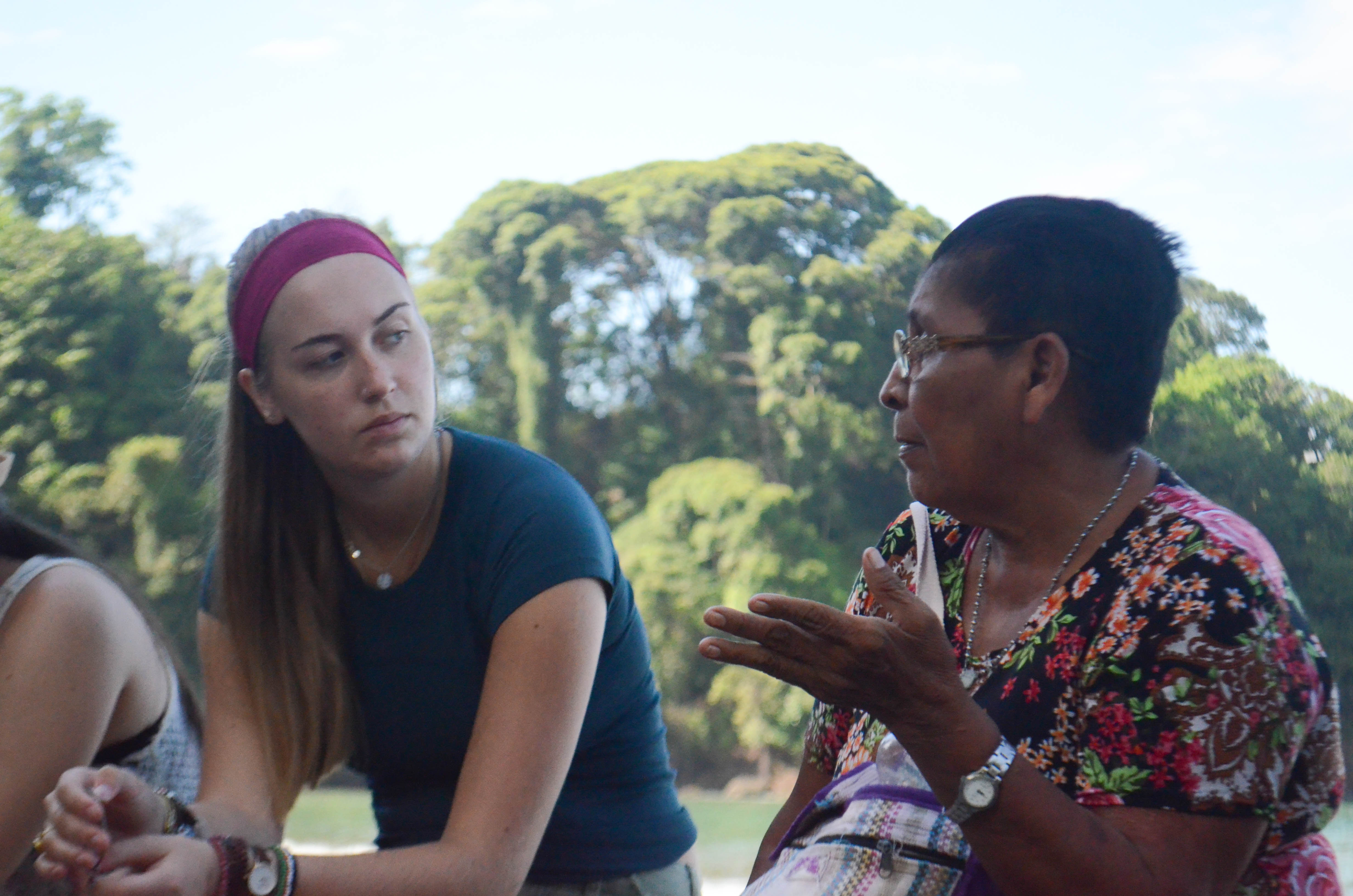
Margarita telling the group about Boruca traditions.
- Dyed material side by side with undyed material.
After getting an idea of the ritual, we had to wait a couple of hours for the tide to go down to look for the shells, so…
Beach Break!
We spent the hours dodging waves in the blue water, taking photos in impromptu photoshoots, building mini sandcastles, and lounging on the rocks. Then, when the indigenous leaders with us deemed the tide sufficient, we set off to find some shells.
The Search for Shells
The search could not truly begin until we hiked to the large rocks where the shells were likely to be found. Enter Caitlin’s personal hell: steep and slippery ‘paths’ that are just asthma attacks and falls by a clumsy tall girl waiting to happen. And it did happen. I sucked on my lifeline, my inhaler, and picked myself off of the ground several times. To make it all better, there were these plants that, if they caught on your skin, would slice said skin open.
So what did I inevitably do? I grabbed onto the plants to prevent myself from falling down a cliff. This reflexive action resulted in several cuts on my hands, arms, and legs, but at least I saved myself from falling down a cliff.
What can I say? I have very limited coordination. It runs in the family (I’m referring to you, Grandma). One of the indigenous women even asked one of the men to help me down the last part, referring to me as the uncoordinated adventurer.
Anyways, I made it. I made it to one of the most stunning places I have ever seen in my life thus far.
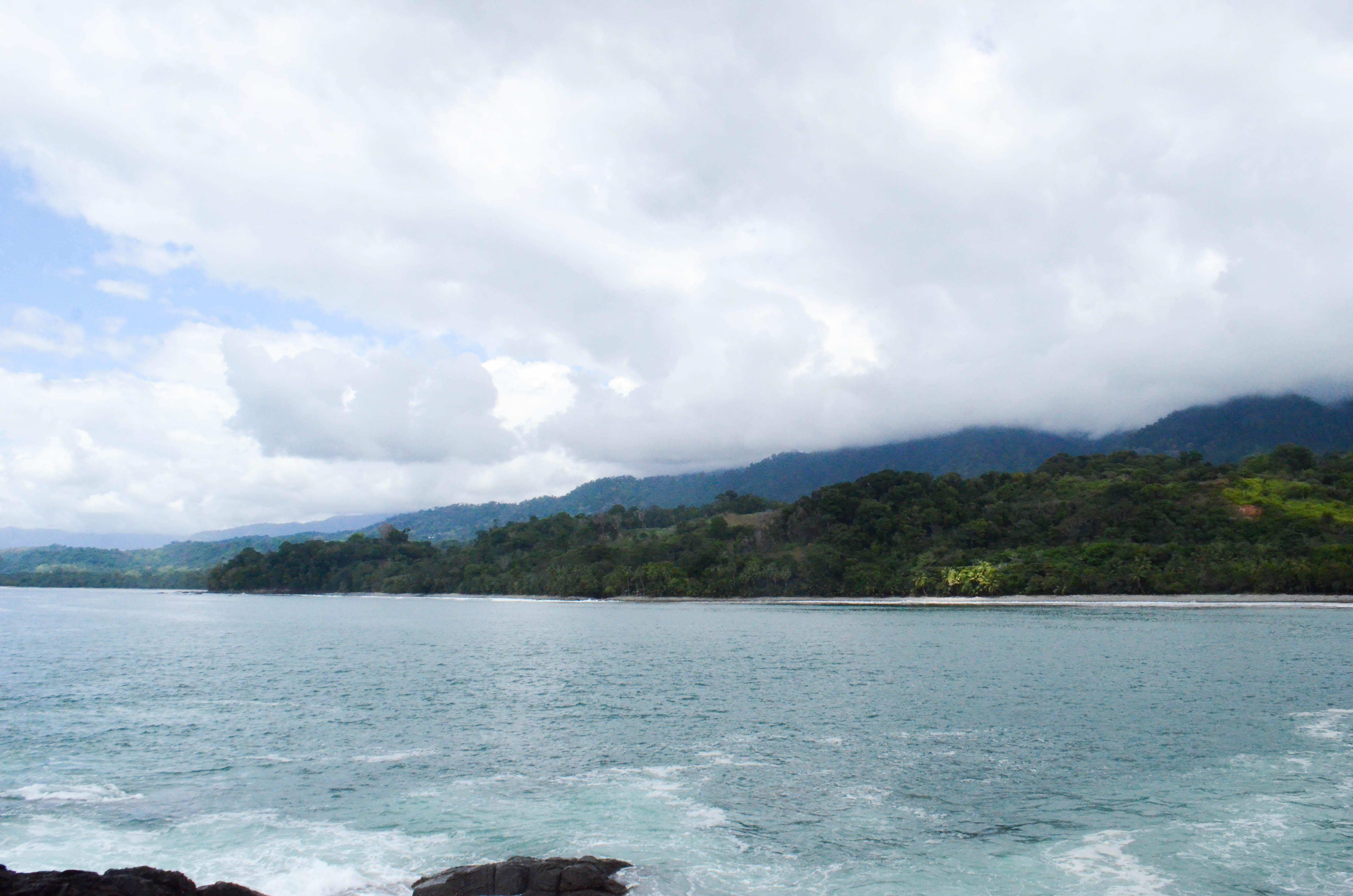
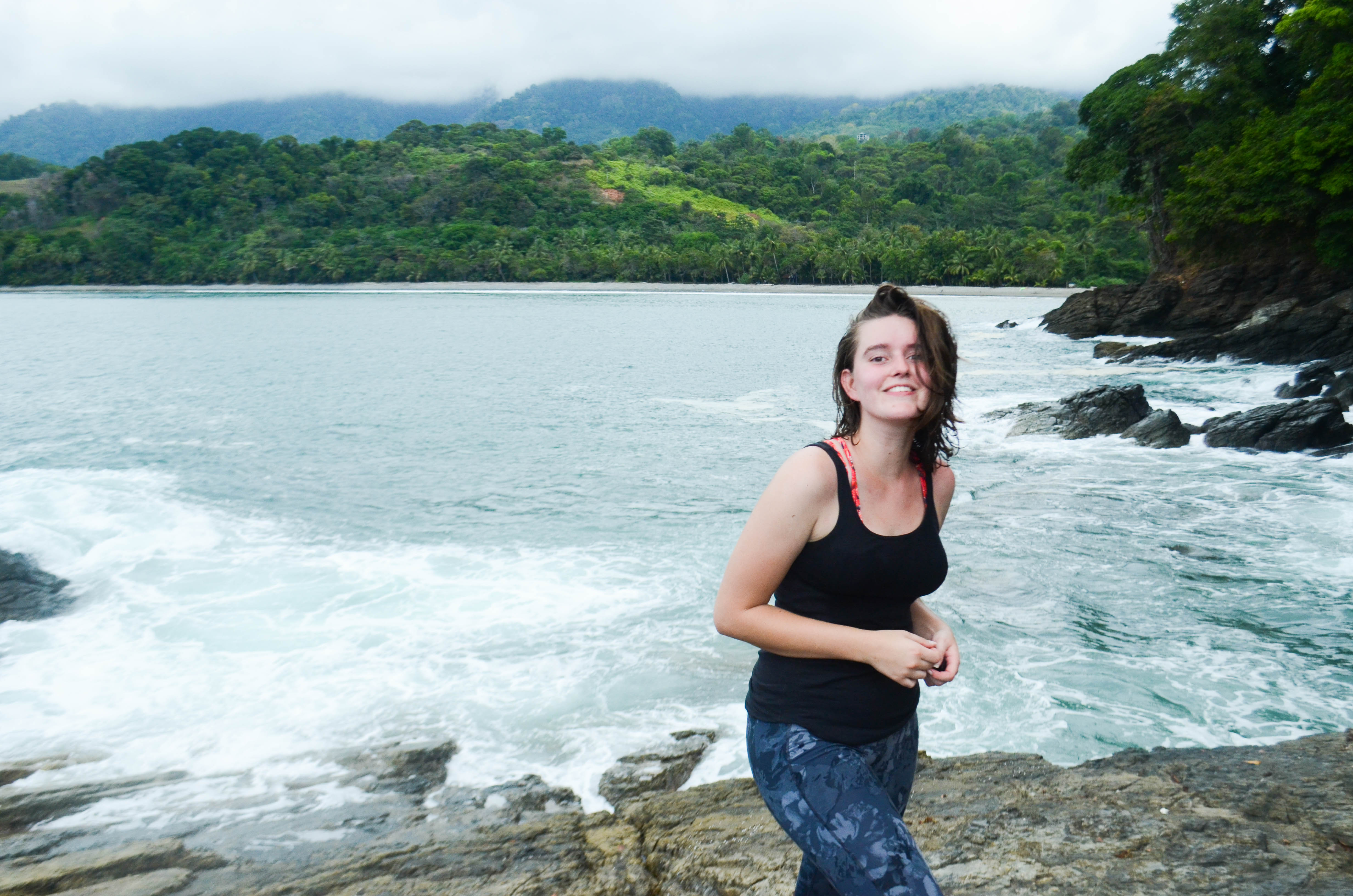
We took a few moments to marvel at where life had taken us. We were on an outcropping teeming with life, surrounded by the crystal clear waters of the Pacific Ocean. Incredible, and worth the perilous trek.
After marveling where we were, we watched our guides get to work looking for the shells. They found over a dozen, and we watched raptly as they blew in the shells before ‘milking’ the liquid out of them onto the materials.
- Climbing down in search of shells.
- Carefully ‘milking’ the liquid from the shell to dye the material.
The process is fascinating to watch, especially considering how much effort goes into obtaining the shells in order to obtain this vibrant purple color. One of my classmates was baffled as to why they would go through so much effort to do this, and said as much to Margarita. Her answer: “It’s part of my culture. It’s tradition. Why wouldn’t we do it?”
After repeating the process with many shells, we made our way back to the shore. Cue more falling, more inhaler doses, and much more help from kind people that recognize my inability to hike (or simply walk) without many falls.
Beach Break pt. 2!
After returning with beautifully dyed materials, we packed up and headed to yet another beach, Playa Ventanas. At this beach, we marveled at natural caves and enjoyed ice cream and fresh-cut coconuts.

My muse, Jackie, in the mouth of one of the caves.
Baile de los Diablitos
After Playa Ventanas, we went back towards the indigenous reserve to attend a festival where we watched the Baile de los Diablitos, or the Dance of the Devils. This is a traditional dance performed each year in January to commemorate the Boruca’s defeat of Spanish conquistadors. It involves the Boruca men dancing in homemade masks and drinking a great deal of chicha (a traditional alcoholic drink). One man is dressed as a bull, representing the Spanish, while the other men, dressed as ‘diablitos’ fight the bull.
By the time the dance made its way to us, many of the men were pretty drunk, but the mock fight-style dance and its accompanying music was still cool to watch.
- The ‘toro,’ or bull representing the Spanish
Traditional Food and the Telling of Legends
Upon returning to the mountainous reserve, we gathered around a bonfire to eat traditional food and listen to Margarita tell traditional ‘leyendas’ or legends of her people. We ate rice and meat wrapped in leaves along with plantain ceviche (to die for) and palmito while Margarita wove a tale of a serpent that fell in love with a young village girl, and another of a spirit, Cuasran, in a waterfall.
By this point, we were all exhausted and nursing some serious sunburns, so we gratefully turned in for the night.
To dispel any misconceptions about what it may be like to stay on an indigenous reserve, I have to say it was very nice. I stayed in a very large house with over 4 bedrooms, 2 stories, a large flatscreen TV, a fridge with filtered water, wifi, and more. Just because they follow many traditions and live far removed from cities does not mean that the community does not enjoy modern-day amenities.
A Hike to Cuasran’s Waterfall
The next morning, we were led to the waterfall that is said to possess Cuasran’s spirit and act as a doorway to another realm. The view of the waterfall and the view from a nearby overlook were breathtaking.
An Artisan Demonstration
The last thing we got to take part in while at Boruca was a demonstration by Margarita of how they make their woven crafts.
They begin with coffee cotton, a different but similar cotton to the one we’re used to. They can be left out for longer than a week to become a more saturated brown or white color.
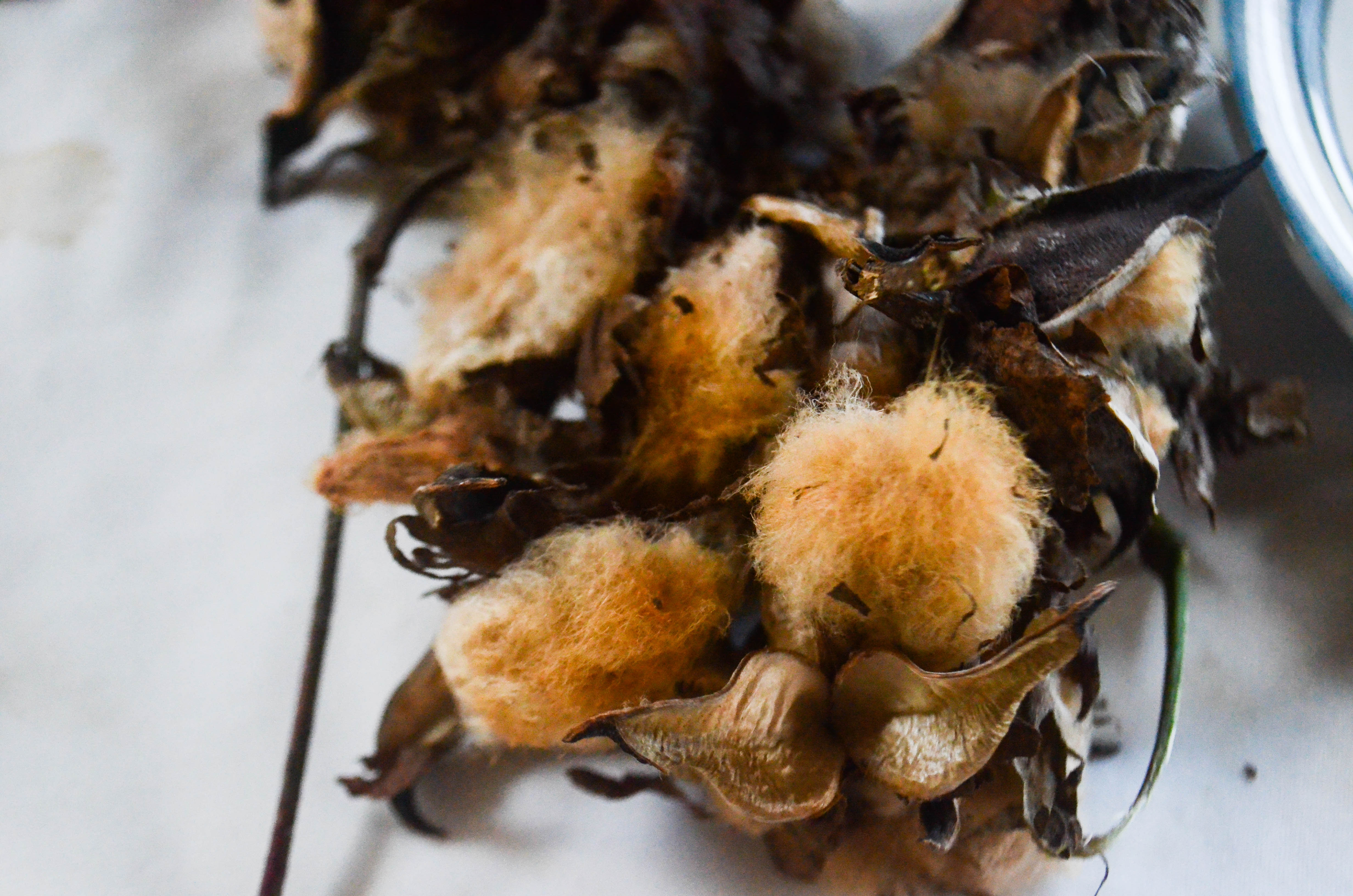
They pull the cotton off of the flower, extract the large seed, and pull the fibers into a longer, thinner shape. They then use a stick-like tool to spin the cotton into a yarn.
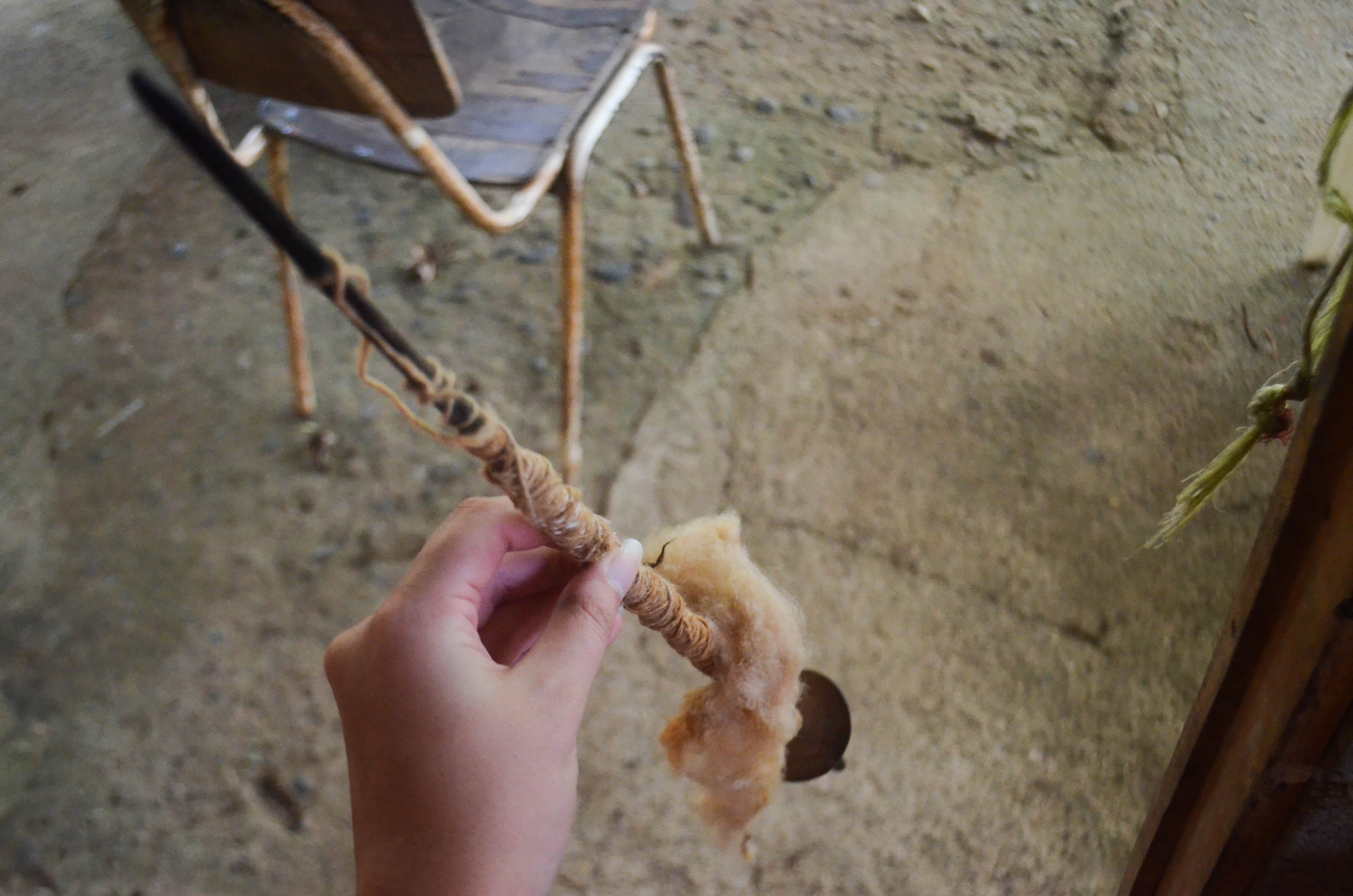
It takes about a full week to create one full stick of yarn, that is then pulled off and ready to be dyed. It takes four full sticks of the yarn to make one back. One week per stick. Four sticks per bag. You do the math.
Then, to dye the yarn, they use a variety of all-natural materials to produce dyes, like the shells we witnessed the day before. Margarita also demonstrated for us a blue dye made from heating and crushing a green plant, and a yellow dye made from crushing an orange variety of yucca. Green dye was made by mixing the two previous dyes.
- Crushing a plant to produce blue dye.
- Applying the yucca to produce yellow yarn.
- The colors produced by the natural dyes.
Margarita then demonstrated a bit of how they weave the yarn into bags. She said that each one takes a full day of work to weave.
Lastly, students were able to see Margarita’s completed work.
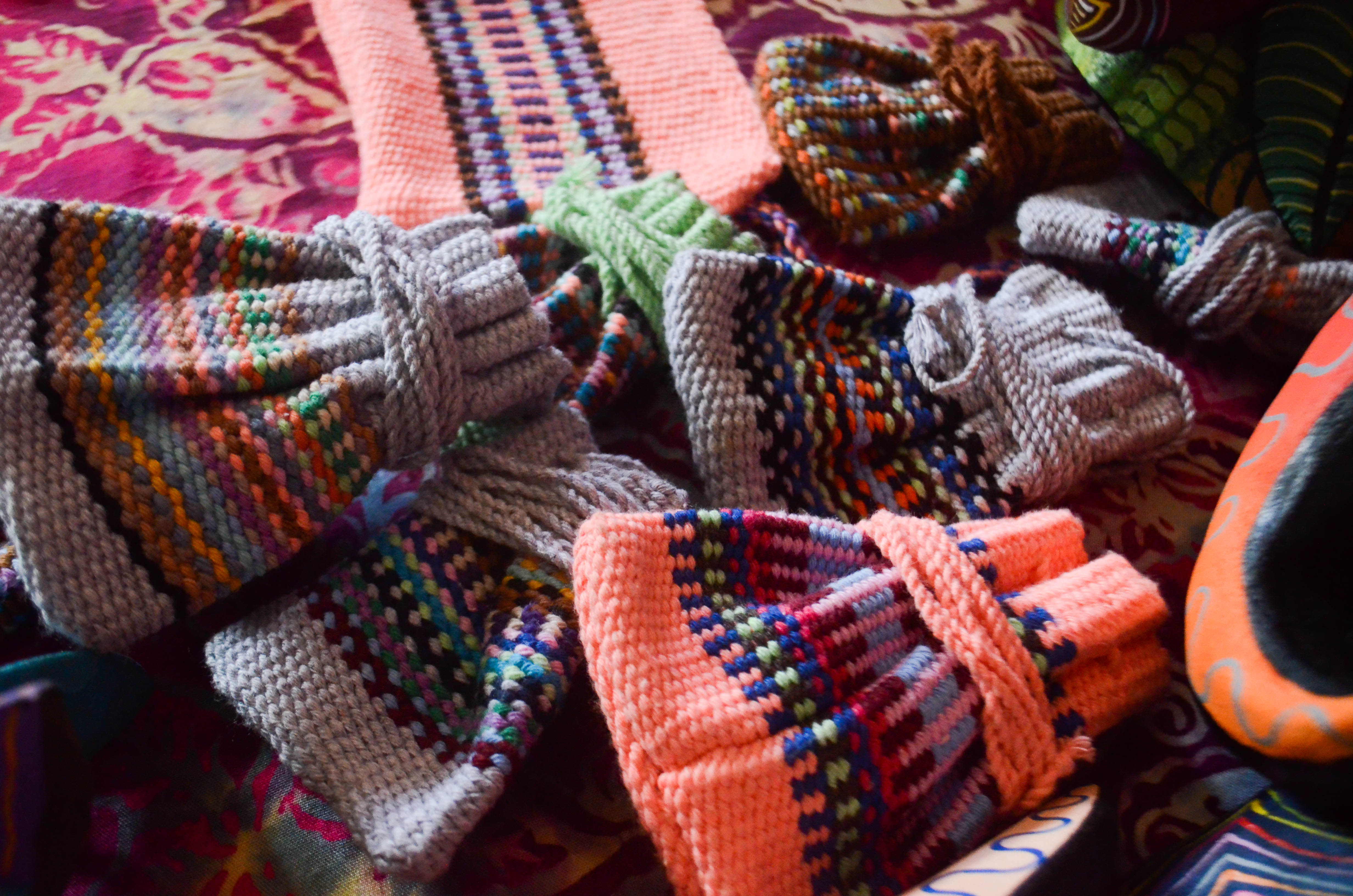
The LIU Global kids left the Boruca Indigenous community in awe of the culture and with a much greater respect and appreciation for the work that goes into indigenous crafts. The work is done from hand and with all-natural materials from start to finish, and that is something both rare and beautiful in today’s world. I am immensely grateful for the experiences I had with the Boruca people and the unique opportunities I get to take part in with my school!
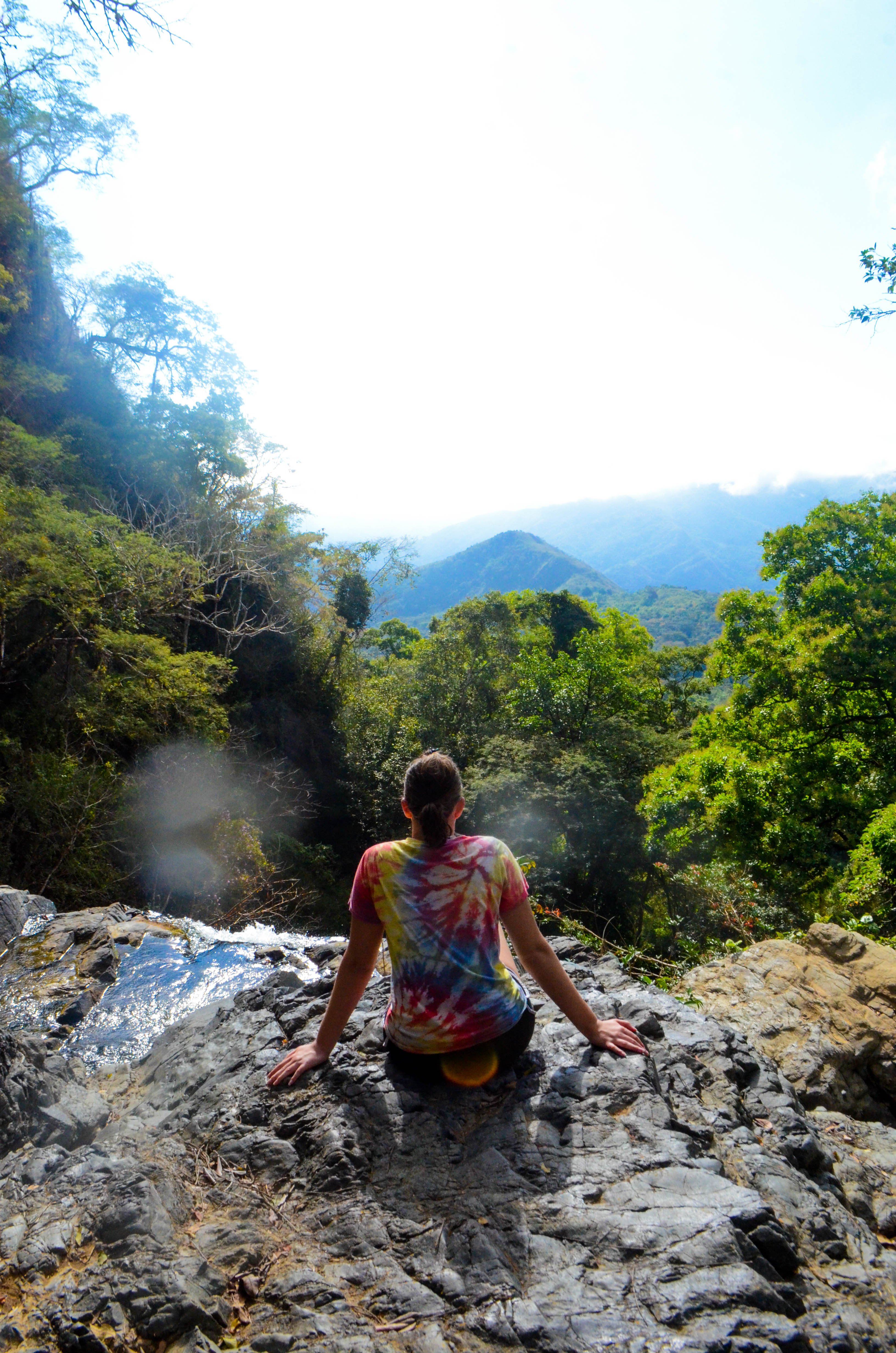
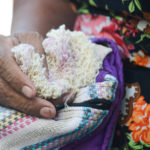
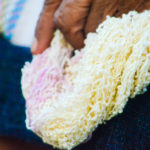
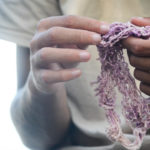
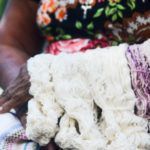
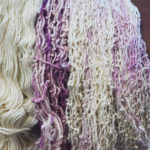
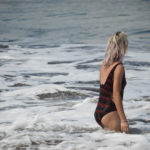
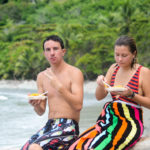
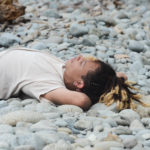
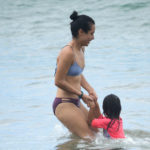
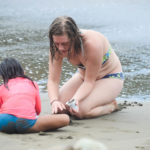
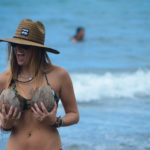
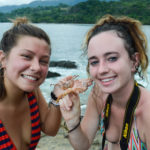
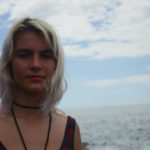
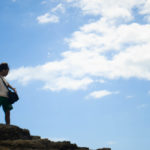
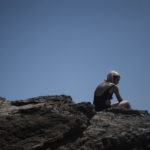
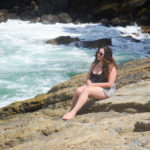
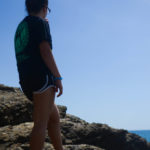
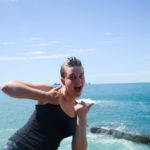
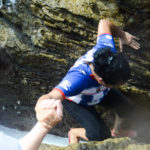
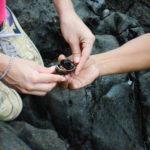
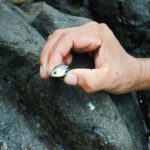
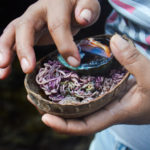
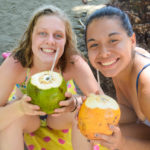
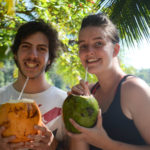
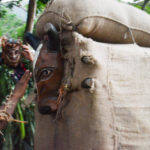
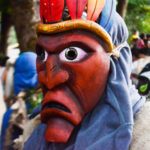
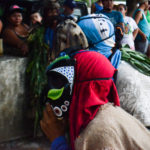
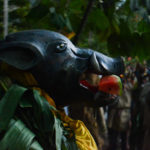
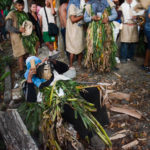
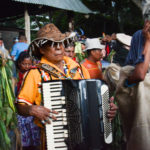
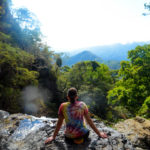
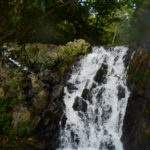
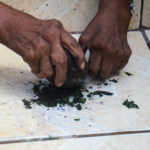
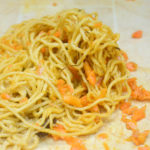
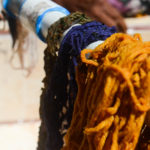
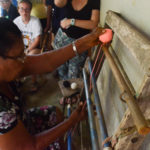
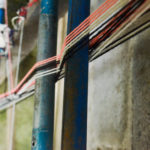
Your experience and amazing time spent with the Boruca people was extremely interesting, what a fabulous opportunity. Thanks for honestly throwing me under the bus but if you keep up at this rate you’ll overtake my gracefulness, ha! ha! Love you, miss you!!